Exercises to Combat Lower Back Pain
Standing Hamstring Stretch
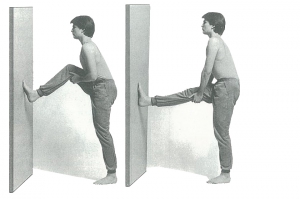
Stand facing a wall a legs length away, raise your right leg and place your foot at hip height on the wall. Keep your back and left leg straight. Slowly straighten your right leg, keeping the heel firmly against the wall. Maintain the stretching position for 10-15 seconds. Repeat 6 and 10 times, then change legs.
The Lumbar Pelvic Rhythm
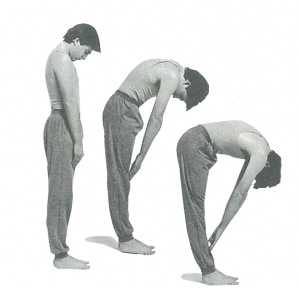
This exercise is much more strenuous than the previous hamstring stretch and you should not try it unless your back is fairly strong & flexible. The key to mastering the lumbar pelvic rhythm is to ensure the upper back is arched before arching your lower back, pelvis and hips.
Stand with your feet together and bend your neck forwards until your chin is touching your chest.
Slowly slide your hands down the front of your legs towards your knees, curling your back segment by segment, until your hands have reached as far as they will naturally go. Relax your neck and shoulders and keep your knees straight. Breathe freely, letting your muscles go loose with each outward breath. Hang in this position for about 15 seconds and stretch out gently, taking care not to strain.
Return to the upright position slowly in the reverse order: uncurl slowly and carefully from hips first, then the lower back, segment by segment, until the neck and head straighten up. Make sure that your pelvis is tucked forwards, particularly as you unfold on the way up. Repeat until mastered & comfortable.
Standing Extensions

Should this exercise increase the pain in your lower back it will be too soon after an acute muscle attack to be performing it and you should try passive lower back extensions instead as this will put less strain on the lower back.
Stand upright with your feet pointing directly forwards, about a shoulder width apart. Place your hands on the small of your back and breathe in deeply.
Next, breathe out slowly. As you do so, bend backwards slowly and gently supporting your lower back with your hands. You will know this exercise is being performed correctly when your back becomes arched. Repeat 10 times.
Slide Gliding
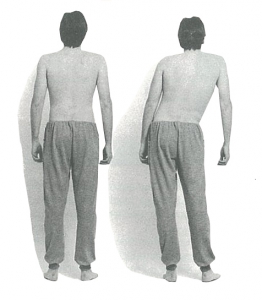
Look in the mirror to see which of your hips is more prominent. If it is your right hip then your lower spine is leaning to the left, and this exercise should help pull your pelvis towards the left, and glide your trunk to the right. If your left hip is more prominent perform this exercise the other way around.
Stand with your feet shoulder width apart, knees straight, and your hands hanging by your side. Slowly bring your hips across to the left side while moving your shoulders (keeping them horizontal) to the right. Maintain steady, relaxed breathing and sustain the stretch. You should feel your muscles in the lower abdomen tighten.
Relax and stand up straight, being mindful not to let your hips slide out to the right again. Repeat 10 times until you can return to a neutral position with no tilt. This exercise is particularly effective performed before standing extensions (above).
Lower Back Stretches
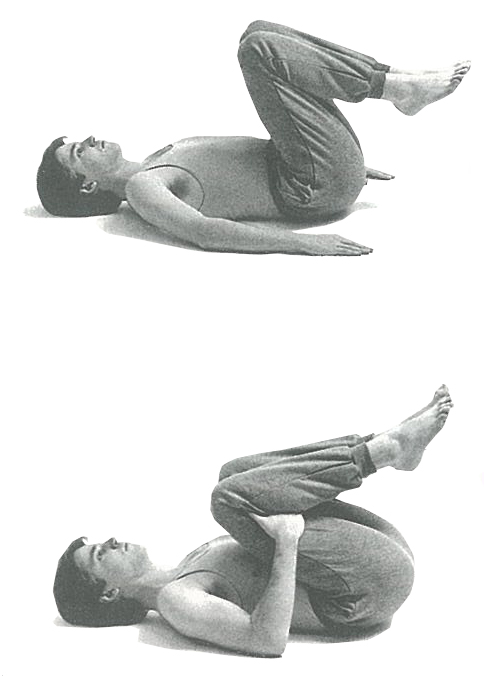
Lie down and do the basic pelvic tilt. Keep your lower back flat and draw your knees up towards your chest.
Grasp your legs behind the knees with both hands and squeeze your knees as close to your chest as possible. Breathe deeply, maintaining the squeeze for at least 7 seconds. Try lowering one leg at a time if you feel your lower back arching when you surrender the stretch.
Leg and Shoulder Raise
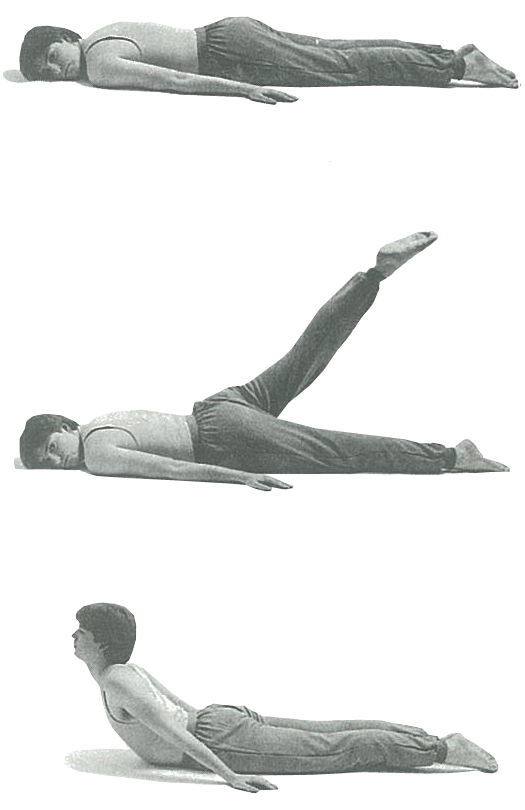
Lie on your front with your head turned to one side and your hands down by your sides. Put a pillow underneath your chest if you find that this helps you lie more comfortably.
Keeping both legs straight, raise one leg as high as it can naturally go without causing pain. Hold for five seconds then lower it gently. Repeat 5 times and, if you are doing this correctly you should find that with each stretch you can lift your leg a little higher.
Raise your head, shoulders, and chest as high as you can – keeping your arms down by your side. Repeat this process 10 times.
Mounting & Sag Mobilizing Exercise
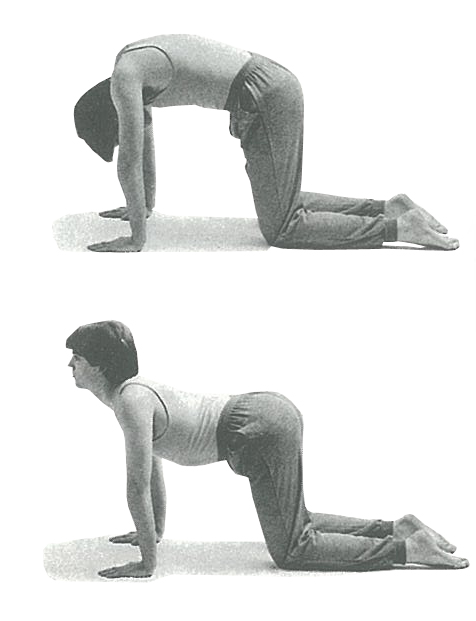
The mounting & sag exercise consists of a series of rhythmic archings and roundings of the lower back. It is helpful in most cases of acute back pain, whether caused by facet joint or disc problems.
Starting on your hands and knees, hunch your back like a cat and hold this position for about 5 seconds. Gradually let your back sag down and hold for a further five seconds.
Hunch and sag your back alternately, starting gently and gradually increasing the range of movement as it becomes easier to do so. If the extreme sag position is painful, allow your spine to drop to a point just before you know you’re going to feel a twinge . Perform this exercise regularly until you can stand extreme sagging / mounting without pain.
Standing Twist
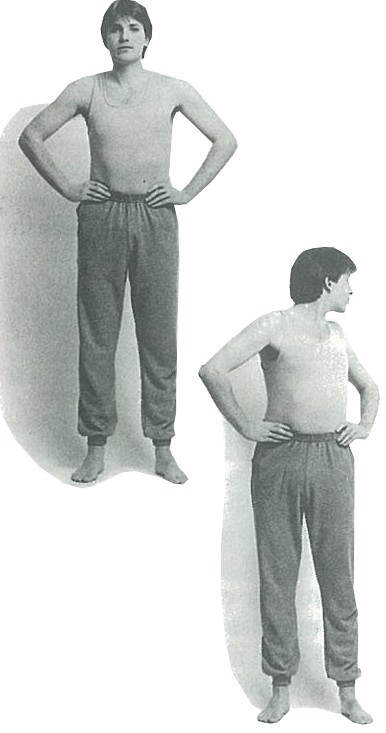
Turn from the waist to look behind you, then turn to the other side until you have twisted each way five times.
If you’re suffering from discomfort in this area, contact us today for more information about exercises to combat lower back pain, and the physiotherapy treatments we offer to help you.
